Iceland is a country known for its unique landscapes, geothermal activity, and stunning natural beauty. Among its many natural wonders, the Silfra Fissure stands out as one of the most remarkable geological features. Located in the Þingvellir National Park, Silfra is an underwater crack between two continents—North America and Eurasia—where you can dive or snorkel and experience the thrill of swimming between two tectonic plates. It’s a must-visit destination for any adventure seeker, scuba diver, or nature lover looking to explore one of Iceland’s most extraordinary sites.
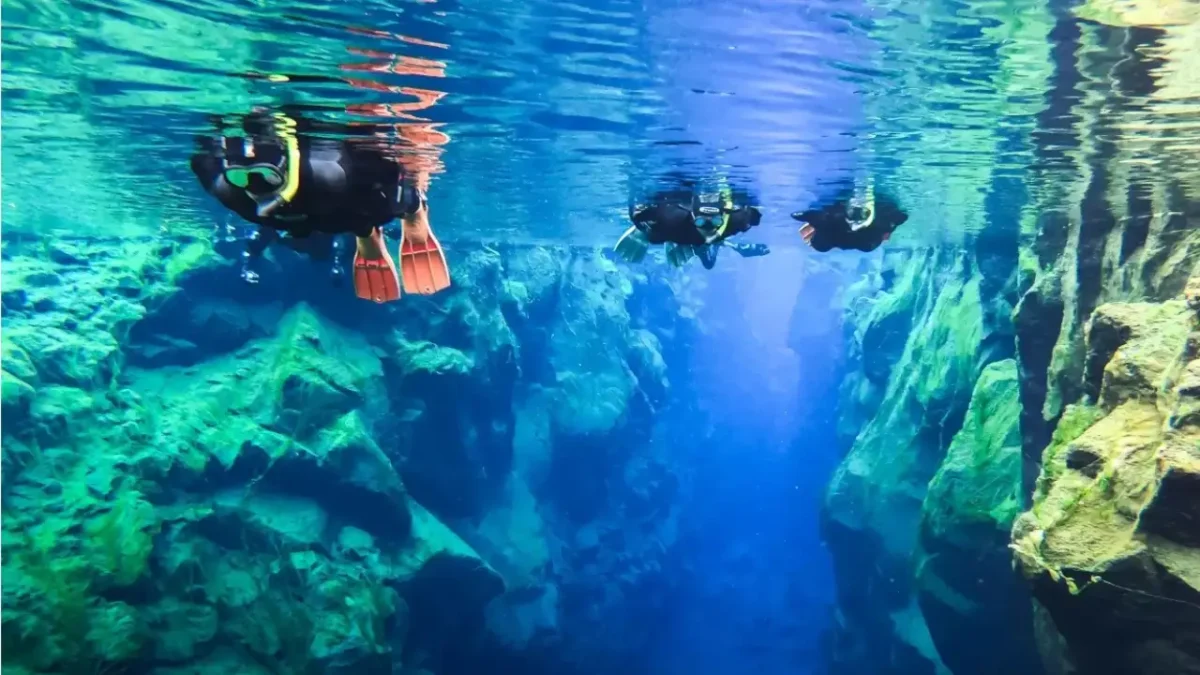
What is the Silfra Fissure?
The Silfra Fissure is a deep rift formed by the divergent tectonic boundary between the North American and Eurasian tectonic plates. Over the centuries, the rift has been filled with crystal-clear glacial water that has filtered through the surrounding volcanic rock. The result is a natural phenomenon unlike any other on the planet—where you can float and dive in water so clear that visibility is often over 100 meters.
The fissure is located in Þingvellir National Park, a UNESCO World Heritage Site, which is home to some of Iceland’s most significant geological formations. Þingvellir is also the location of the world’s oldest existing parliament, dating back to 930 AD, making it not only a geological wonder but also a historically significant site.
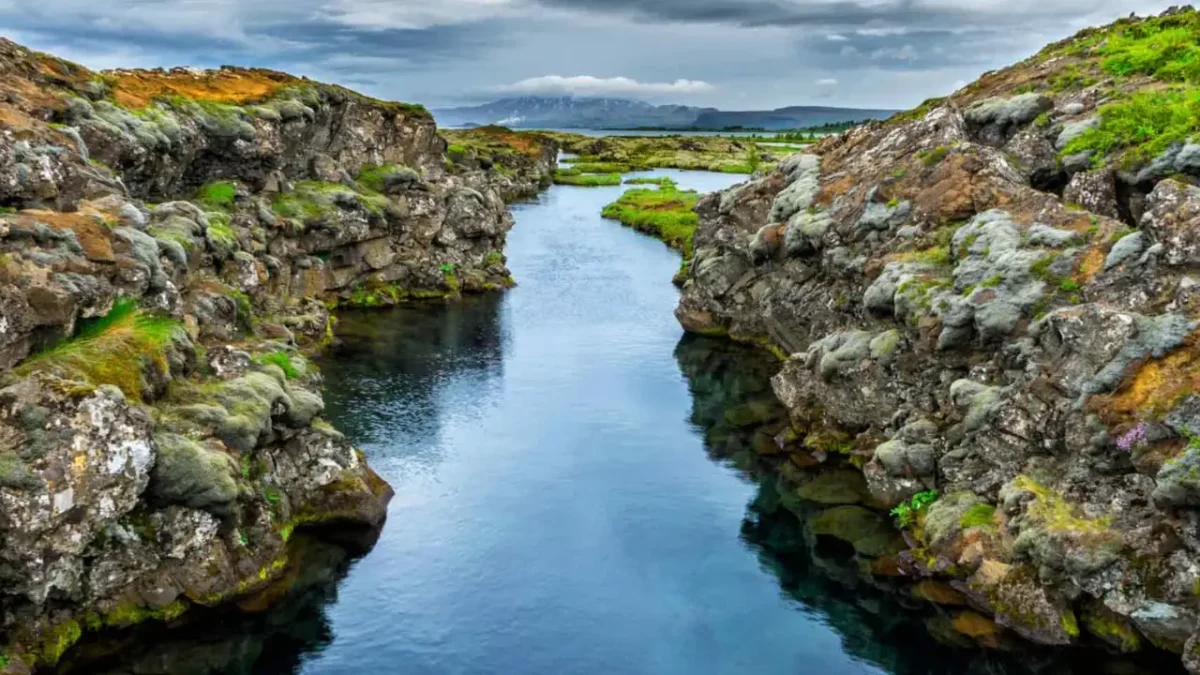
The Geography and History of the Silfra Fissure
The Silfra Fissure lies at the edge of Thingvallavatn, Iceland’s largest natural lake. Over thousands of years, the rift between the tectonic plates has widened, and the gap between the plates continues to grow, albeit at a very slow pace. The process of plate tectonics causes the earth’s crust to move, and Silfra’s underwater crack is the visible result of that movement.
What makes Silfra particularly interesting is that it offers a unique opportunity to experience the geological forces at work beneath the Earth’s surface. The fissure itself has been created by tectonic activity, but the crystal-clear waters are fed by the Thingvellir’s glacial springs, which are part of the Vatnajökull glacier system. These cold waters have been filtered through layers of lava rock for decades, which explains their pristine quality.
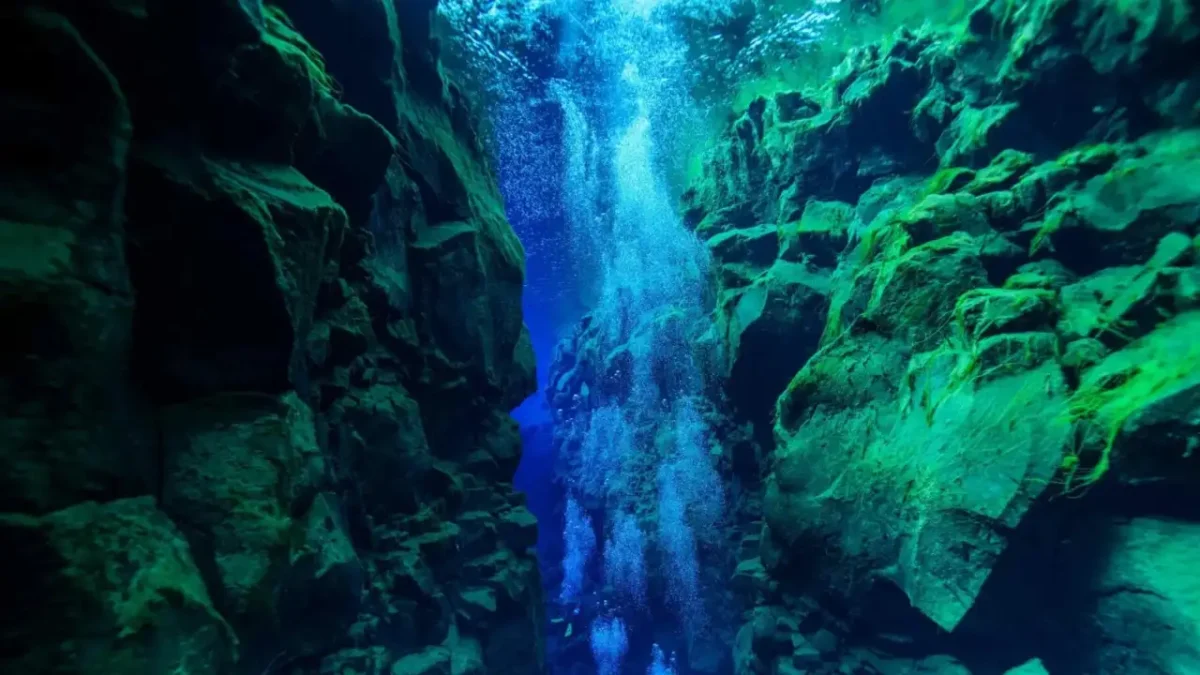
Why is the Silfra Fissure So Special?
Several factors combine to make the Silfra Fissure a must-see destination:
Tectonic Plates: The most remarkable aspect of the Silfra Fissure is its position at the boundary between two tectonic plates—North America and Eurasia. There are very few places on Earth where you can experience such a phenomenon so closely, making it a once-in-a-lifetime opportunity to witness the forces of nature in action.
Crystal-Clear Water: The water in the Silfra Fissure is incredibly clear, thanks to its filtration through volcanic rock over decades. This gives divers and snorkelers visibility of over 100 meters in some spots. You can see the underwater landscape in stunning detail, and the clarity of the water makes it one of the most visually striking diving locations in the world.
Unique Diving Experience: Silfra is one of the few places on Earth where you can dive between two continents. Snorkelers and divers can glide between the North American and Eurasian tectonic plates, which is an experience that cannot be replicated anywhere else. The opportunity to be in two places at once—while surrounded by the beauty of Iceland’s natural landscape—is an unforgettable experience.
Geological and Historical Significance: Not only does the Silfra Fissure offer a geological wonder, but it’s also located in a UNESCO World Heritage Site. Þingvellir National Park is significant for both its cultural and geological importance, as it is the site of Iceland’s oldest parliament, the Alþingi, established in 930 AD. This makes a visit to Silfra not just an adventure in nature, but also a journey into the heart of Iceland’s history.
How to Experience the Silfra Fissure
The most popular way to explore Silfra is through snorkeling or scuba diving. Whether you’re an experienced diver or a first-time snorkeler, there are guided tours available to help you navigate the fissure and enjoy the incredible experience of swimming between two tectonic plates.
Snorkeling at Silfra
Snorkeling in Silfra is an experience like no other. The water is so clear that you feel like you’re floating in air, and the underwater landscape is filled with striking colors and rock formations. If you’ve never snorkeled before, don’t worry—guides offer full training and equipment. You’ll be provided with a dry suit to protect you from the cold waters, which typically hover around 2-4°C (36-39°F). The suit helps ensure you remain comfortable throughout the experience, allowing you to focus on the breathtaking scenery.
Snorkeling tours typically last around 1.5 to 2 hours, and you’ll have ample time to float through the fissure, take in the view, and marvel at the surreal underwater world. As you move through the crack, you’ll feel like you’re in a dream world, with the sun’s rays piercing through the water and illuminating the blue rock walls that surround you.
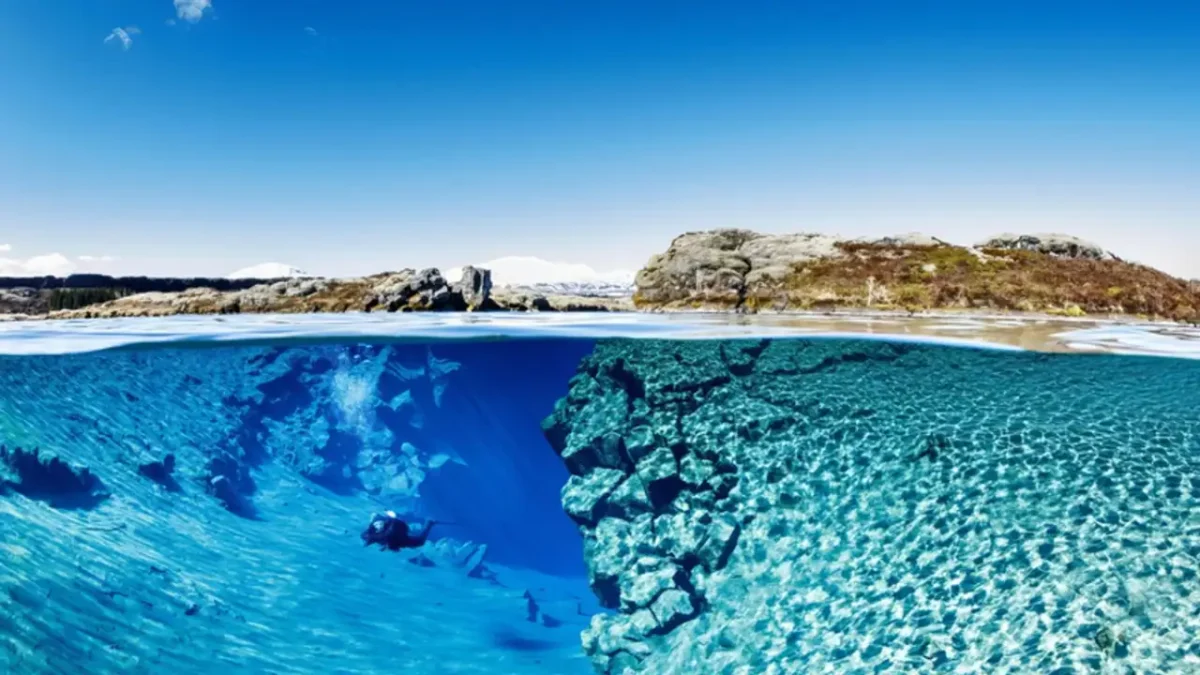
Scuba Diving at Silfra
For certified divers, diving in Silfra is an incredible opportunity to explore the fissure at a deeper level. Scuba diving in the Silfra Fissure allows you to go further into the crevice and experience the underwater world in more detail. The cold temperatures and the clarity of the water provide excellent visibility, making it an ideal spot for photographers and underwater enthusiasts.
Scuba diving in Silfra is typically done with a certified dive guide, and tours can range from beginner-friendly dives to more advanced experiences for experienced divers. You’ll have a chance to see the stunning underwater rock formations, swim through the fissure, and enjoy the incredible silence and stillness of the water.
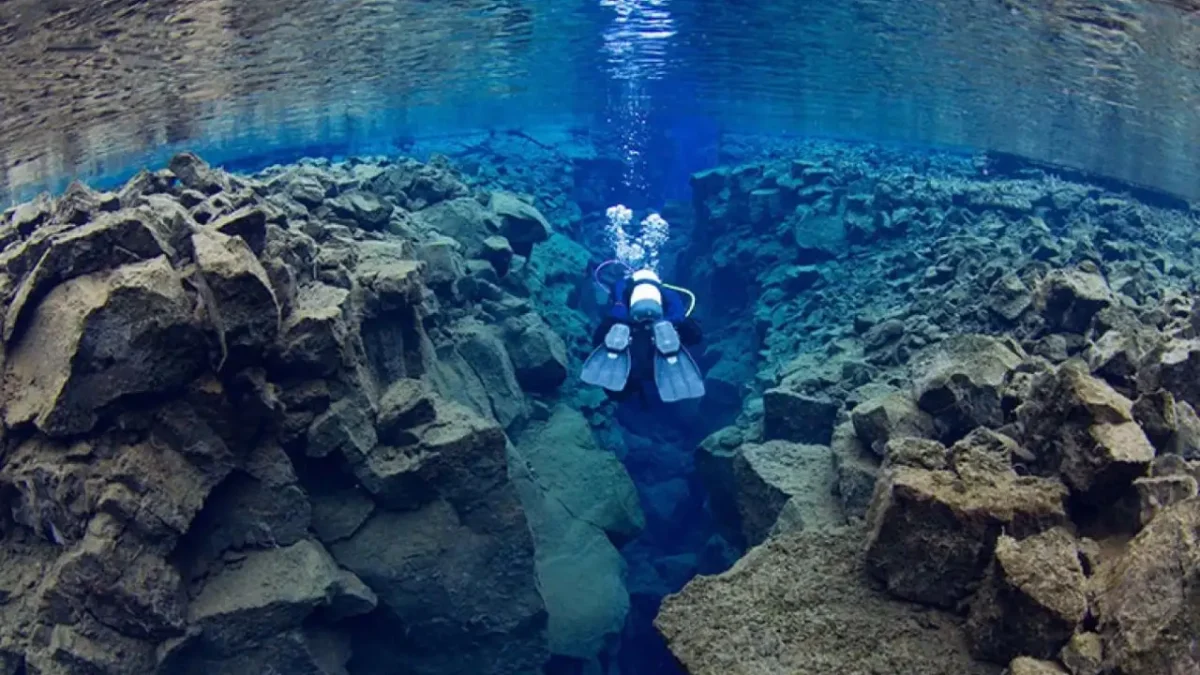
Best Time to Visit Silfra Fissure
The best time to visit Silfra is during the summer months (from May to September), when the weather is milder and the days are longer. During this time, visibility in the water is at its best, and you’ll have the opportunity to experience the midnight sun, where the sun never sets.
However, visiting in winter (from November to March) also offers its own charm. The landscape is covered in snow, and the water remains clear, providing a tranquil and serene experience. You might even get the chance to see the Northern Lights while snorkeling or diving, which adds a magical touch to your adventure.
Tips for Visiting Silfra
Wear Warm Clothing: Even in the summer months, the temperatures in Iceland can be chilly, especially near the water. Make sure to wear warm clothing and layers while you’re not in the water.
Book in Advance: Silfra is a popular destination, so it’s best to book your tour in advance, especially during the summer months.
Prepare for Cold Water: The water temperature in Silfra is cold, hovering around 2-4°C (36-39°F) year-round. Be sure to bring your sense of adventure and be prepared for the cold. The dry suits provided by guides will keep you warm, but make sure to dress warmly under your suit.
Check Your Diving Certification: If you’re planning on scuba diving, make sure you have the appropriate diving certification. A basic open-water certification is typically sufficient for most diving tours at Silfra.
Respect the Environment: Silfra is a pristine natural environment. Follow all the guidelines provided by your tour guide and avoid touching the underwater rock formations to help preserve this beautiful site.
Conclusion
The Silfra Fissure is a geological marvel and an unforgettable adventure for anyone visiting Iceland. Whether you choose to snorkel or dive, this unique location offers the opportunity to swim between two continents, explore crystal-clear waters, and experience the Earth’s geological power up close.

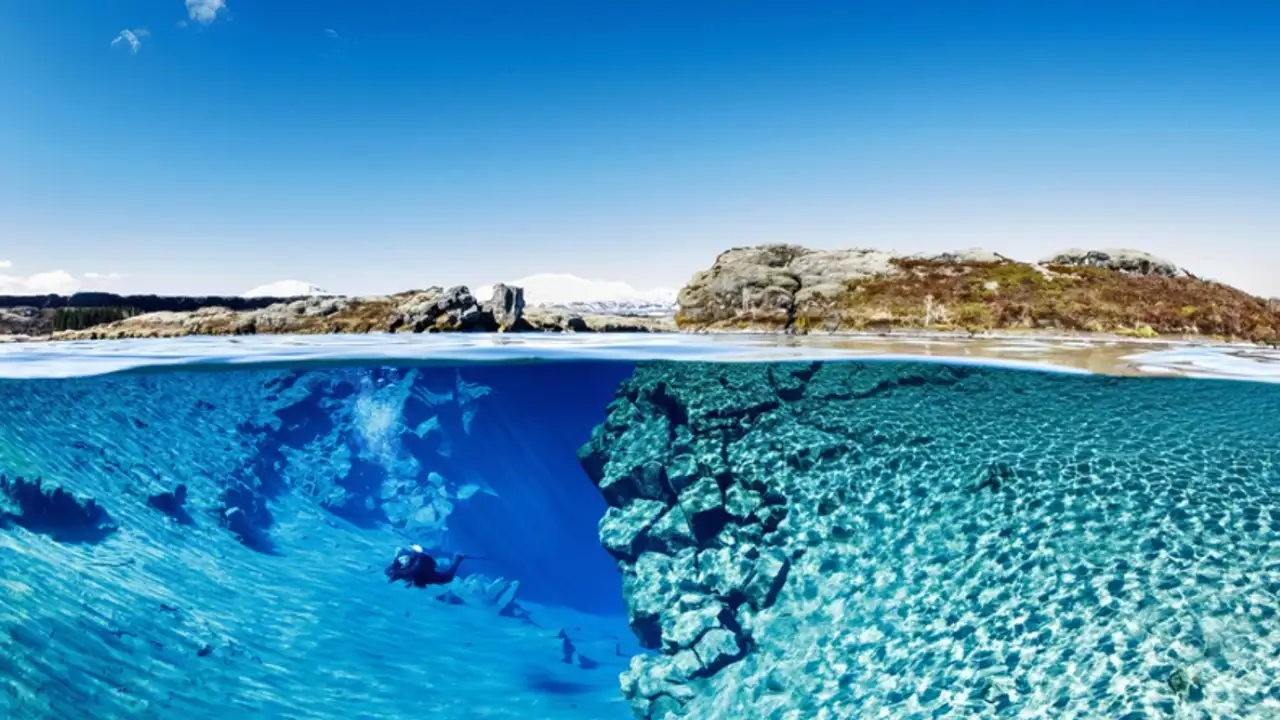
Comment (0)